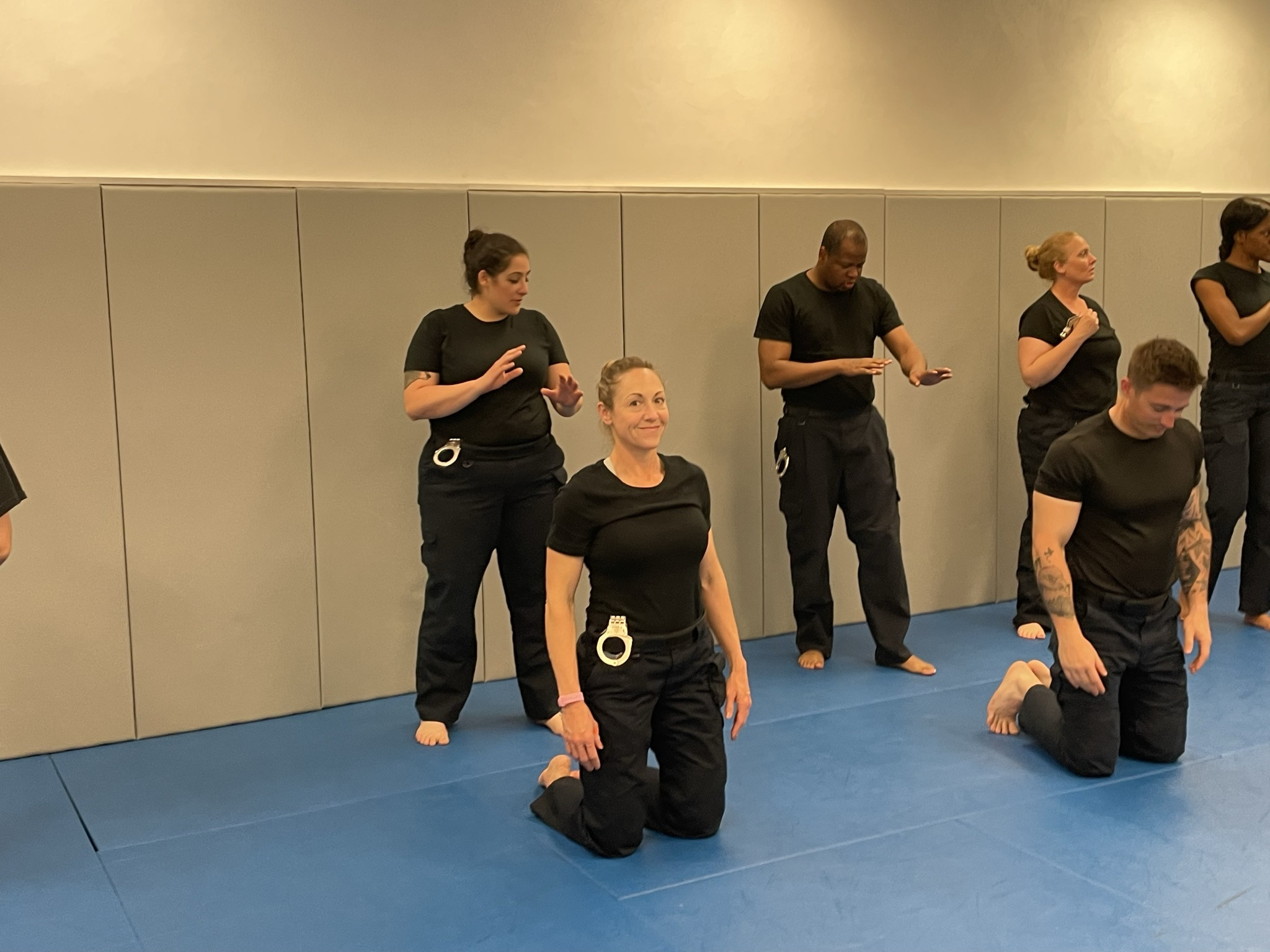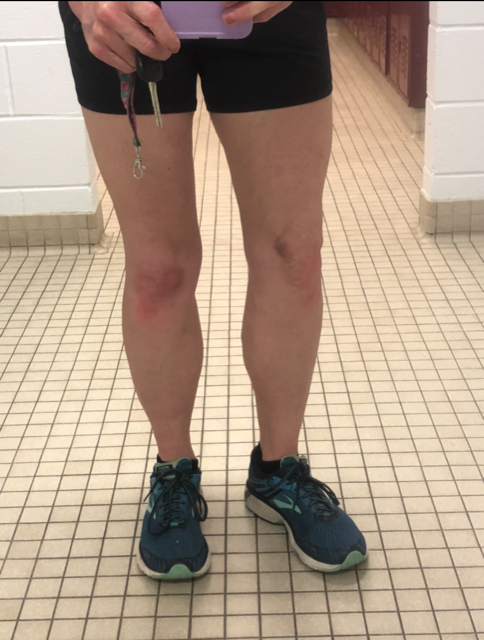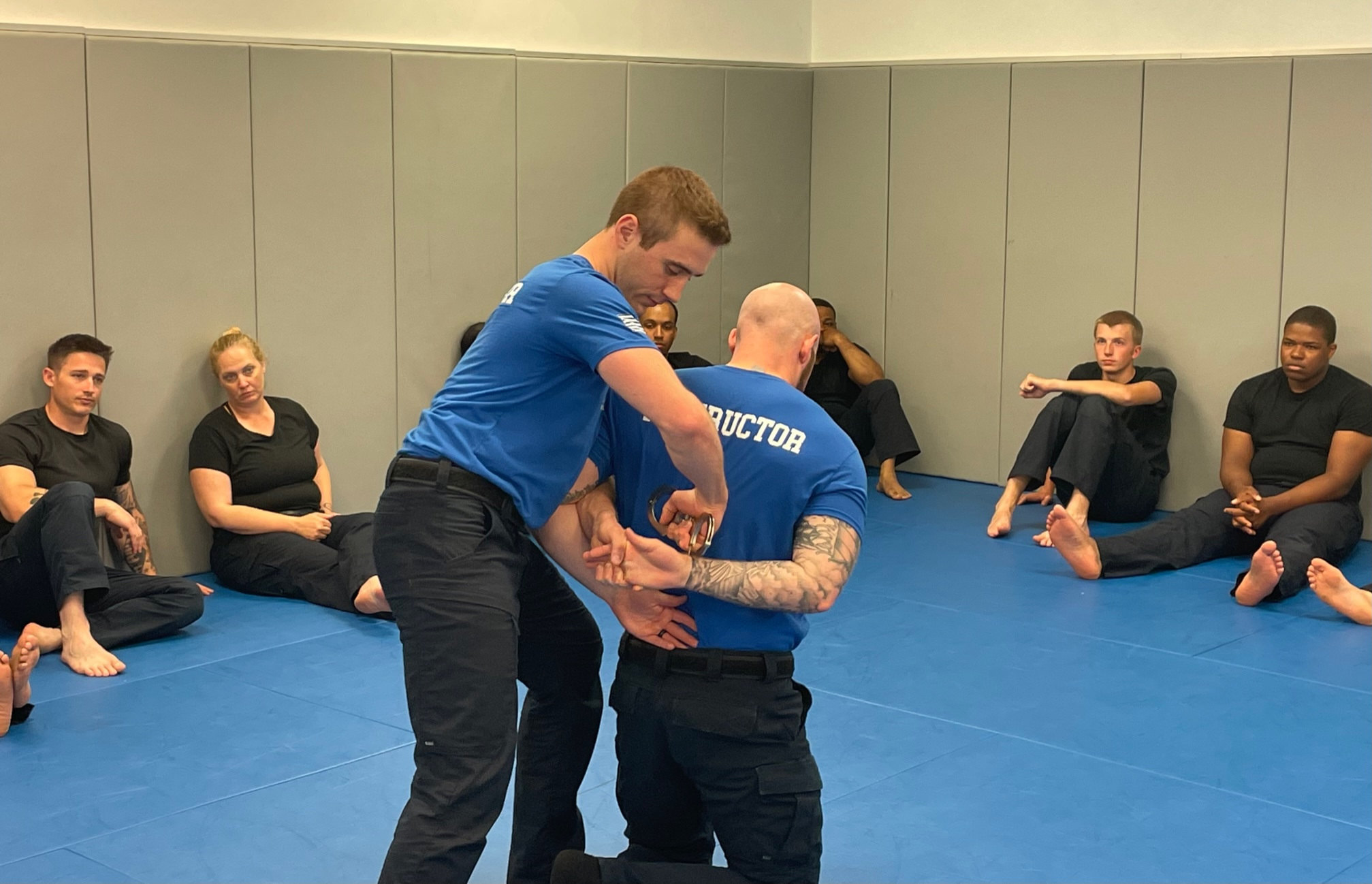Week 9
Back to Basics: A 17-year law enforcement veteran goes back to basic training
April 8, 2022
This week we started getting deep into defensive tactics. We have practiced a few techniques during our physical training (PT) workouts throughout the academy, but this week and next week are dedicated to just defensive tactics.
If you have never taken part in martial arts, ground-fighting techniques or law enforcement tactics, then you’re probably not familiar with the defense and control techniques that we’ve learned this week. That’s why I am here – to share the good, the bad and the bruises!

We have learned techniques to get out of head locks, gain control and prevent an inmate or suspect from escaping, continuing to assault or resist arrest. A great equalizer is the use of a suspect’s balance points against them. A smaller deputy – like me – can use these techniques to knock a larger suspect off balance to gain control in a fight. We also learned about various pressure points that can be used to achieve compliance from resistant suspects. One thing that’s different than the training I had 23 years ago is that today’s training emphasizes keeping a suspect close. If they are being locked in tight by a deputy’s legs and arms, it's difficult for them to effectively strike the deputy’s head and body. It also is more effective inside the Correctional Center, where we are in close-contact. In contrast, many of the techniques we were taught years ago were designed to gain space between the officer and the suspect for safety. Our current training shows that both tactics can be effective. I think it’s great how defensive tactics (or DTs) have evolved to reflect the current best practices in the field.
What is it like during defensive tactics week? Well, picture 15 recruits plus numerous instructors in a small classroom with wrestling mats on the floor. Everyone is practicing takedowns and ground-fighting techniques, and it gets hot fast. Pretty soon, everyone is all sweaty. All I can say is, thank goodness for deodorant!
All joking aside, it has been a tough week.

Being in that hot environment learning new tactics all day with very few short breaks is challenging. Physically, you are using your legs for grasping and holding “suspects” close while using your arm strength to gain control of their head, arms, shoulders, etc. All those muscle groups are on fire all day and, by the end of the day, we are exhausted. We are also covered in bruises from playing both the “suspect” and the deputy during takedowns. Check out the picture, which is from only the second full day!
Mentally, learning new tactics every day, plus remembering those from earlier in the week, takes a toll. I know earlier this week I learned a tactic that I was doing very efficiently and effectively earlier in the day, but after numerous new moves and multiple different drills, I drew a blank for a moment when it came time to recall it eight hours later. I had memory overload! Thankfully, it is a training environment, and we have instructors in the room with us coaching us through the moves required for each drill. They are all certified DT instructors and have attended advanced schools to improve their instructing abilities and take their skills an even higher level.
We are also working very well together as a team to coach our partners as we take turns doing the drills. For example, as the “suspect,” you can tell your “deputy” partner if the amount of pressure they are using is enough to make you comply, and, if not, they can push harder. You can also let them know if they’re using too much force so they can ease up. Our goal is to safely gain compliance while using the minimum amount of force necessary. This is training, but having feedback from our partners lets us know whether our techniques are having the intended effect. We do not have that luxury in real life, so we have to get it right here! In the jail or out on the street, a suspect isn’t going to give us constructive feedback. Failure to use defensive tactics properly could result in a criminal escaping, assaulting us or – in a worst-case-scenario – hurting a member of the public. In the jail, we don’t carry weapons, so these skills are all we have to maintain order and safety.

What is the best part of the end of each day? A shower. Seriously. The smell of fighting people you have been rolling on the mat with coupled with the heat of the room and having your face pushed into the mat where everyone’s feet have been is not enjoyable. But it is necessary and prepares us for safely doing our jobs after we graduate. It also prepares us for what we may encounter in the jail or on the streets, which can have their own delightful smells, especially at the Oceanfront on hot summer nights.
Today we will be tested on each of the techniques we’ve learned. Just to give you an idea of how many techniques we are tested on, they are listed on four full pages. It is a lot to remember.
I am hoping that today’s DT practical test will go well for our class and that everyone retains the information needed to demonstrate the techniques we have learned. I look forward to sharing our test results next week!
P.S. If you want to be a deputy sheriff, you still have a few days to apply for our current vacancies! The application deadline is midnight on April 11. Find the details at vbso.net/sworn-positions.
Photos and videos by VBSO Public Information Officer Toni Guagenti and Deputy Recruit/Public Information Officer Margie Hobbs
